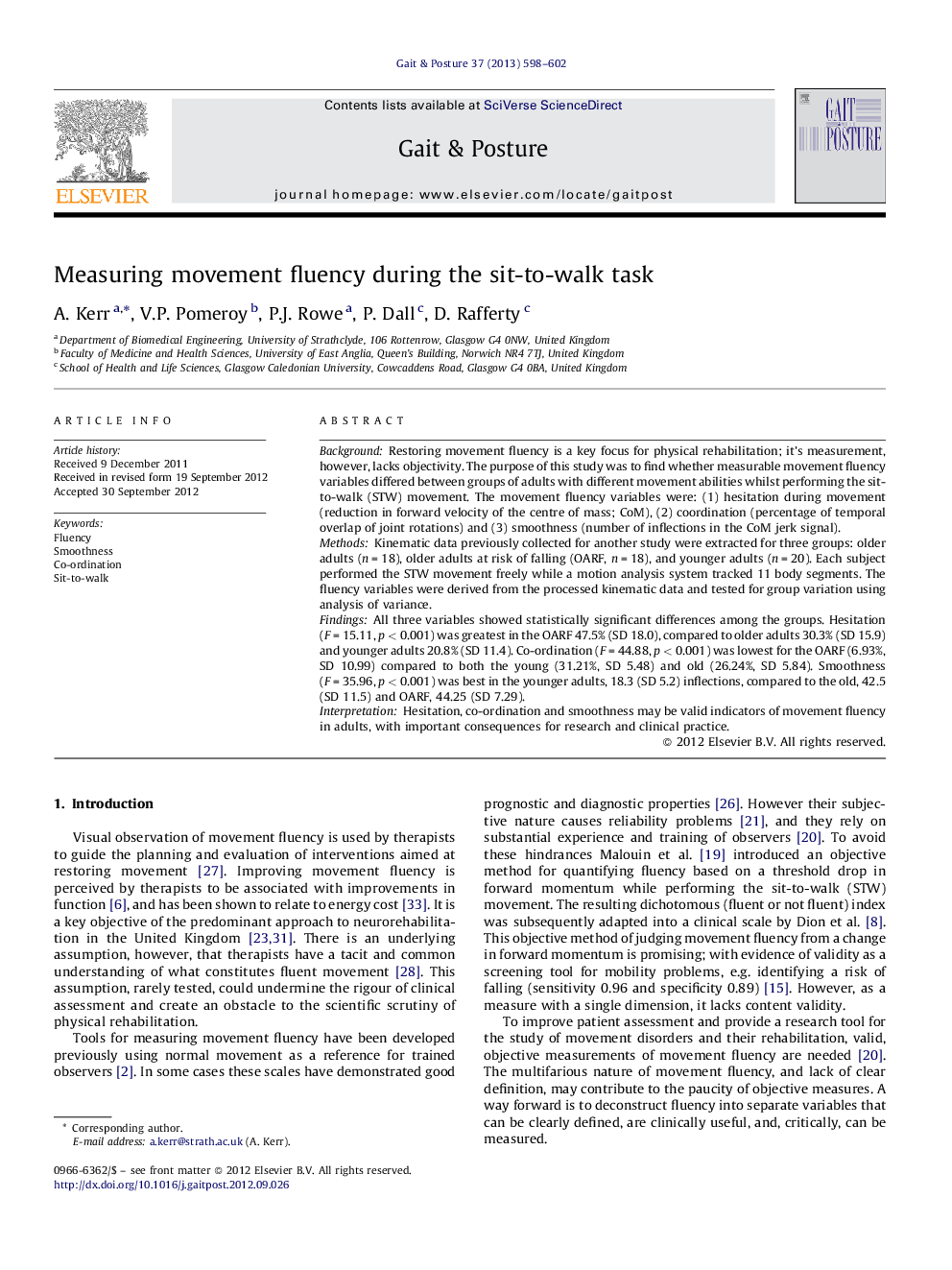| کد مقاله | کد نشریه | سال انتشار | مقاله انگلیسی | نسخه تمام متن |
|---|---|---|---|---|
| 6207284 | 1265657 | 2013 | 5 صفحه PDF | دانلود رایگان |
BackgroundRestoring movement fluency is a key focus for physical rehabilitation; it's measurement, however, lacks objectivity. The purpose of this study was to find whether measurable movement fluency variables differed between groups of adults with different movement abilities whilst performing the sit-to-walk (STW) movement. The movement fluency variables were: (1) hesitation during movement (reduction in forward velocity of the centre of mass; CoM), (2) coordination (percentage of temporal overlap of joint rotations) and (3) smoothness (number of inflections in the CoM jerk signal).MethodsKinematic data previously collected for another study were extracted for three groups: older adults (n = 18), older adults at risk of falling (OARF, n = 18), and younger adults (n = 20). Each subject performed the STW movement freely while a motion analysis system tracked 11 body segments. The fluency variables were derived from the processed kinematic data and tested for group variation using analysis of variance.FindingsAll three variables showed statistically significant differences among the groups. Hesitation (F = 15.11, p < 0.001) was greatest in the OARF 47.5% (SD 18.0), compared to older adults 30.3% (SD 15.9) and younger adults 20.8% (SD 11.4). Co-ordination (F = 44.88, p < 0.001) was lowest for the OARF (6.93%, SD 10.99) compared to both the young (31.21%, SD 5.48) and old (26.24%, SD 5.84). Smoothness (F = 35.96, p < 0.001) was best in the younger adults, 18.3 (SD 5.2) inflections, compared to the old, 42.5 (SD 11.5) and OARF, 44.25 (SD 7.29).InterpretationHesitation, co-ordination and smoothness may be valid indicators of movement fluency in adults, with important consequences for research and clinical practice.
⺠New method for quantifying fluency based on hesitation, smoothness and co-ordination. ⺠Adults at risk of a fall are less fluent than old and young adults when performing the STW movement. ⺠Old adults are less smooth than young adults when performing the STW movement.
Journal: Gait & Posture - Volume 37, Issue 4, April 2013, Pages 598-602
